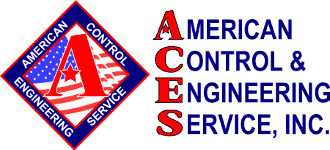THE MYSTERY
One of ACES customers is a fine food producer with 20 facilities across the US and Mexico. One of the ovens they used for final processing had always been finicky and difficult to start, with a startup routine of 12 seconds, so they asked ACES to modify the oven to include a pilot burner.
Not long after this work order, the client called again with an emergency: Now the oven wouldn’t start at all. We dispatched a CSI (Control Systems Inspector) to the scene, stat.
THE CLUES
First, the CSI removed the flame safeguard (FSG) and started troubleshooting the terminals to the Main Gas and the igniter. When the CSI jumped the terminal to the Main Gas, the gas valve did indeed open, but jumping the igniter terminal didn’t produce a spark. He measured Ohms to ground in various places around the igniter, burner plate and the spark plug. He found 17K Ohms from the tip of the igniter to the burner plate. The CSI pulled the igniter in order to check the spark plug and found it producing 0.2 Ohms from spark plug to tip, so the spark plug itself was fine.
Next, the CSI checked for ignition, and he wasn’t able get a spark, so he climbed inside the oven, turned off and locked out the gas, and attempted to manually run the igniter. That’s when he realized the igniter had been installed in the wrong hole. It appeared correct from the outside, but from inside the oven it was apparent that the igniter wasn’t contacting correctly. The only way to ascertain this was to actually climb inside the oven.
After tracing wires for Low Gas Pressure, High Gas Pressure and Air Flow, and jumping different combinations, the CSI ascertained that if he jumped out both the Low Gas and Air Flow switches simultaneously the unit would consistently light. With only one of those switches jumped, the unit would fail on pilot.
THE PERP
The CSI identified that terminal 21 should power the Main Gas during PTFI (Pilot Trial For Ignition). He moved the Main Gas wire from terminal 9 to terminal 21, but this terminal was supplied with only 39V AC when it should have 120V AC during pilot and run. The CSI jumped the Low Gas and tested terminal 21 again and got consistent readings of 120V AC — and the Man Gas valve opened when it should.
At this point he could open and close valves manually, but not on automatic. The Low Gas pressure switch wouldn’t pass enough current when the Main Gas valve turned on. The Low Gas pressure switch ensures the machine has the minimum required gas pressure supplied to the oven before it will light.
THE SOLUTION
When the CSI removed the jumper from the Low Gas pressure terminal and tested the voltage, the input was 120V AC, but the output was only 39V AC. He diagnosed a bad Low Gas pressure switch and changed it out. Later, the maintenance staff confirmed that, as a matter of fact, the switch had been full of water the day before, thanks to vigorous pressure washing and a leaky seal.
When the CSI moved the Main Gas wire from terminal 9 to terminal 21, all starting issues were resolved and the oven fired up reliably every time. The culprit turned out to be faulty wiring. Actually, the oven was incorrectly engineered for use without a pilot burner — an oversight at the factory. Implementing the original wiring plan without a pilot burner meant the FSG wasn’t used correctly, and the oven never really fired properly.
Altogether there were three separate mysteries traced out by the CSI that day: The igniter installed in the wrong hole, the Low Gas pressure switch damaged by water and factory wiring that was inappropriate for use without a pilot burner.
The original call was for ACES to modify the oven to include a pilot burner to aid in the starting of the oven. But once the CSI made modifications to the wiring and the other issues, the oven didn’t need a pilot burner anymore, and it lights up perfectly every time — within about 2 seconds of ignition sequence, compared to 12 seconds previously.
This is a good example of something we see on a regular basis: improperly commissioned equipment which never runs smoothly until it’s fixed. Whether you’re installing a new machine or troubleshooting an older one — or just recovering from water exposure — put your system controls in the hands of an expert. Call us for a free estimate today.
